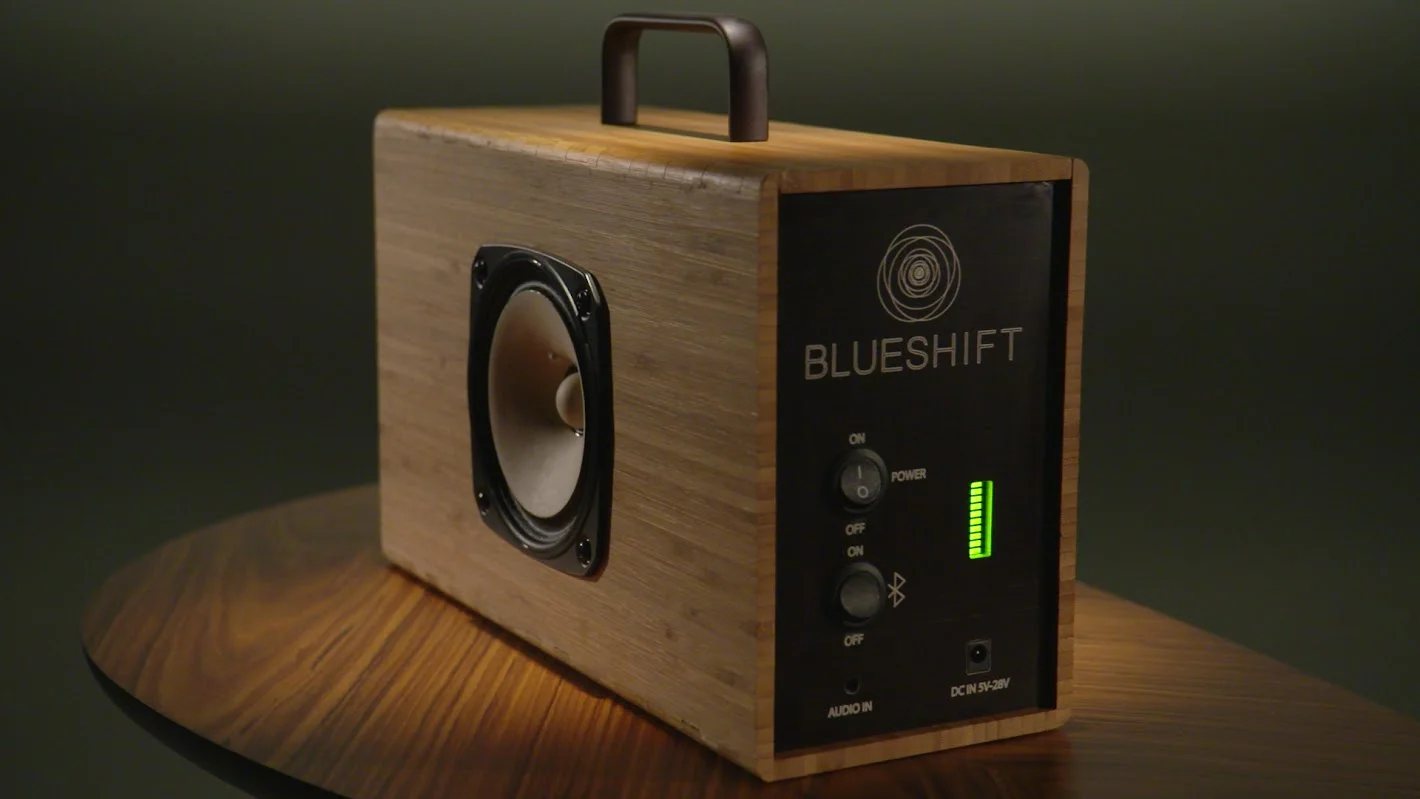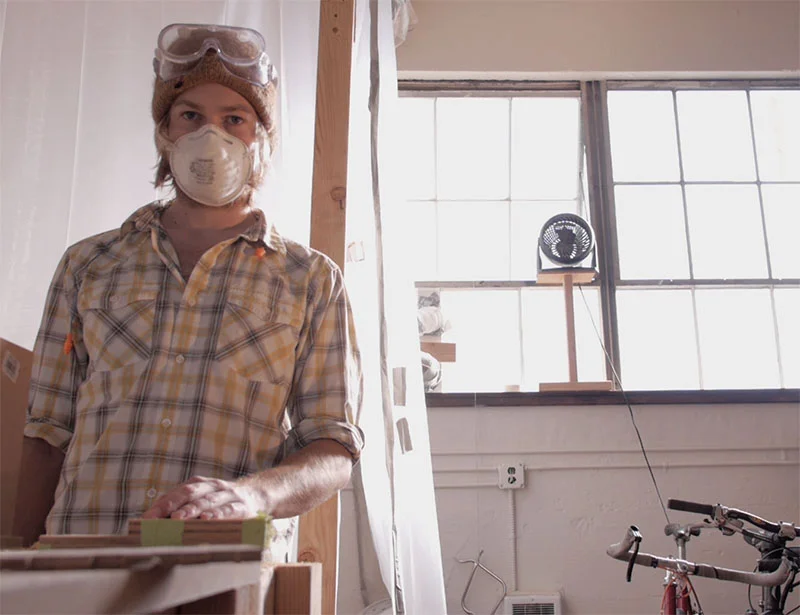Sam Beck is the guy behind Blueshift, an open source sustainable eletronics business that is all about building cool stuff. Helium speakers are the company's first product to market and will be the world's the first supercapacitor-powered portable speakers. Not to mention the design files are open source.
In this interview, Sam shares with me his unique business mindset and why he's not afraid anyone will steal his thunder, even while they might have access to his design.
If we build stuff that's cool enough, we'll find a way to make money.
Sam grew up in Anchorage, Alaska and went to college at Columbia University in New York City where he studied physics and art. He got his start with open source eletronics when he moved to Portland in 2008 and began building a bike stereo system that ran off of a dynamo hub (a bicycle part that generates electricity) and used capacitors as backup power. It was a few years later that Sam realized he could use supercapacitors as a primary power source.
Read more about the first supercapacitor-powered portable speakers in this interview.

You made the files for your supercapacitor power supply board open source. Why?
I posted the power supply files because I'm serious about this being open source. Although there is still design work to be done, I wanted to show that this isn't just a theoretical idea—and that as it develops, we will continue to make the design available publicly. It's a way to develop trust with our customers and potential customers.
We have working prototypes. I'm listening to Brad Mehldau via Bluetooth / capacitors right now.
Also, the power supply is the heart of this system, and it's the piece that I want to see others use. Blueshift isn't open source because we want to have other companies copy our speakers—we're open source because we want to encourage the development of other durable, sustainable electronics. Broadly, we want people to be able to build cool stuff that's different from what they can buy today. The power supply is a key building block toward other supercapacitor-powered products. Blueshift can't develop every possible application of the technology on our own.

What makes Blueshift different?
Consumer electronics today are built around a business model that doesn't care very much about consumers. Products are sold through distributors and retailers, who each need to get a cut. So in the end, most consumer electronics products are marked up four to five times from the build cost to the retail price. Because of this reality, consumer products are designed with cost as the most important factor.
On top of that, if you're a huge electronics company, it's in your interest to build products that don't last as long, because you would effectively be eating into your own market down the road. This is a misalignment between the interests of consumers and the interests of electronics manufacturers.
The idea behind Blueshift is that resolving this misalignment presents an opportunity to build better products and sell them at fair prices. The Internet is the key ingredient. It allows us to design great products without huge engineering and IP protection costs (open source). It allows us to reach customers without an expensive retail distribution network. And it allows us to access a global supply chain efficiently.
Plus, the patent system is lame. I can't imagine spending tens of thousands of dollars to get a patent, and then expecting to spend hundreds of thousands more to enforce it. Blueshift is about building cool stuff. If we build cool enough stuff, we'll find a way to make money without patent litigation.
Tell us about your experience during your crowdfunding campaign. Why Crowd Supply? What are your greatest challenges?
You can see ours here.
When you see other people raising tons of money through crowdfunding, it always looks like magic. My experience has been that there is a little bit of that—there are contributions coming in from all over the world from people I've never spoken to—but it's also a ton of work. Convincing people that it's worth spending a lot of money on a product that they can't touch yet is hard. It's also a numbers game—it takes a lot of traffic to make a sale. Finding a ton of traffic (especially the right traffic) is hard.
Crowd Supply has been great. I've met with the team there several times, and we've been emailing daily. They had a very good idea from the beginning of how the campaign would go, and what it would take to make it work. They helped out a ton with media outreach, plus more basic things like actually naming the product. I'm really glad that I went with a platform that wants to be actually involved with the campaign—as the only full-time person at Blueshift, I could not have made this work on my own.

How do you find the appetite for open source?
People are excited about that aspect, but I don't think that has made a huge difference on sales at this point. People want to see a great product and see how it can make their lives better—the business model is secondary. That said, open source has made a big difference in that I've gotten a lot of interest from designers and engineers since this campaign started. I think that the open source community has helped to drive a lot of traffic my way, and I keep getting useful ideas from people who wouldn't bother to think about what they could do to help a traditional company.
Do you feel everyone should open source their design files?
I don't feel there is any moral obligation to make everything open source. There are kinds of innovation and invention that are capital intensive, and patent protection can be an incentive to do that type of development.
That said, every open source project makes the open source idea more powerful. I do think that projects that rely heavily on existing open source technology should stay open.
Open source hardware is already changing the world for the better, and it's really just getting started. There's no going backward. It's a question of what the designer is trying to accomplish. I think that my generation is going to keep pushing in this direction—collaborate, build awesome stuff, and figure out how to get paid for it later.

Who is the team behind Blueshift portable speakers? Is it your first product to market?
I've been working on this project full time for the last year or so and am the only full-time person working on this project. But I've had and have lots of help. Several engineers (two electrical and one mechanical) have already contributed to the project. I made our crowdfunding campaign promo video with my friend and director Chris Flanagan; another friend, Brandon Jiaconia, did the sound. And there has been a lot of outside assistance for our branding, marketing, messaging, and media strategy. This is our first real product launch, although some friends have ended up with Blueshift bicycle speakers!
One of the biggest advantages of creating the product as open source hardware is that all of the people who have contributed know that while they are helping me out personally, they are also contributing to something larger.







7 Comments